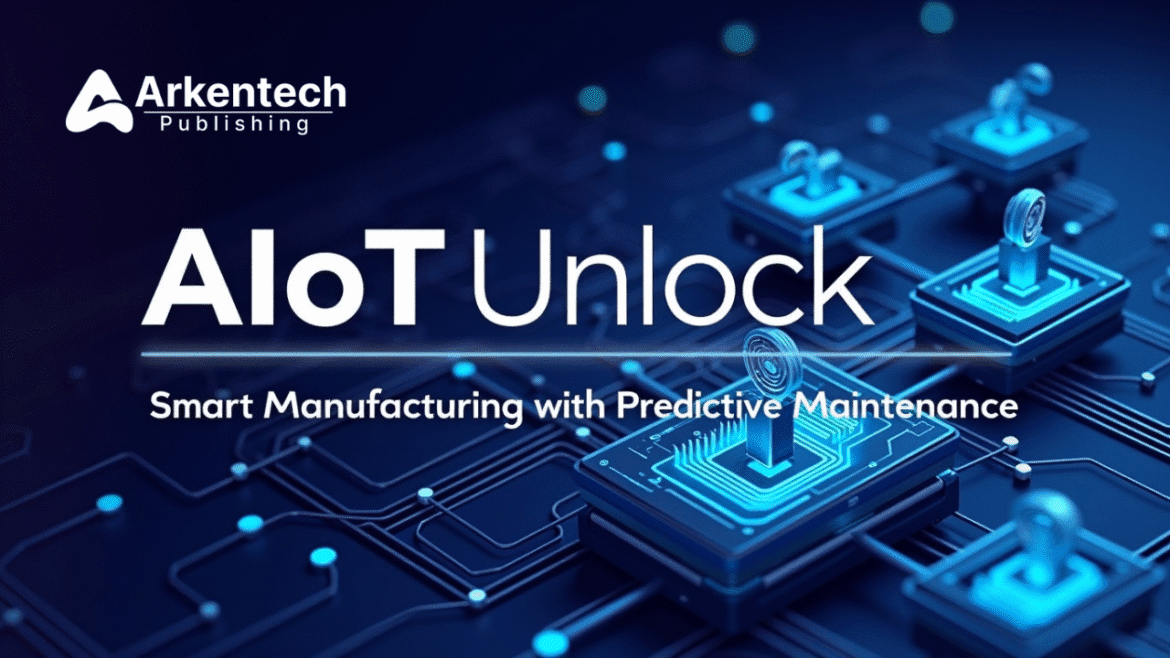Introduction
In the developed world of smart production, AIT (artificial intelligence of things) plays an important role in enabling future foggy maintenance on a unique scale. By combining data-active power from IoT (Internet of Things) with AIS intelligence, AIOT provides actionable insight, reduces unplanned shutdown and increases productivity. When the industry industry grows 4.0 and beyond, AIT explains how factories work and determine in future maintenance.
What Is AIoT?
AIOT refers to the convergence of AI and IoT technologies. While the IoT devices collect and transfer data from the physical environment, AI processes this data to highlight the pattern, make predictions and make decisions. When it comes to production, this combination lets companies infection in a future maintenance model from reactive or planned maintenance.
Traditional Maintenance vs. Predictive Maintenance
Before AIOT, most of the manufacturers trusted it:
- Reactive maintenance – fixation machines only after errors.
- Preventive maintenance – Planning of checks and part replacement regardless of the real situation.
Both approaches have restrictions – reactive maintenance results in expensive decline, and preventive maintenance often leads to unnecessary expenses. AIOT enables future maintenance, these problems solve these problems by crossing teams on continuous monitoring tools and potential errors.
How AIoT Enables Predictive Maintenance
Here’s how AIoT transforms predictive maintenance into a powerful tool for manufacturers:
1. Real-Time Data Collection
Sensors installed on machine monitor variables such as temperature, vibration, sound, pressure and wear. These IoT devices live real -time data in cloud platforms or edge devices for frequent analysis..
2. AI-Driven Analytics
The AI algorithm process and analysis of this large dataset are to identify the subtle signals of wear or malfunction that will be invisible to human operators. Machine learning models improve over time, making predictions quickly accurate.
3. Smart Alerts and Automation
When AI detects anomalies or trends that suggest an adjacent error, it sends automatic alerts to the maintenance teams. In advanced systems, it can also trigger automatic closures to prevent damage or plan service without human intervention
Key Benefits of AIoT in Predictive Maintenance
● Reduced Downtime
By predicting errors before they occur, manufacturers raise the unspecified shutdown and continue to operate the operation evenly.
● Lower Maintenance Costs
AIOT ensures that maintenance is done only when needed, avoid both overpower and expensive repair due to unexpected breakdown.
● Extended Equipment Lifespan
The machine helps expand the lives of assets through timely intervention by continuous health monitoring.
● Enhanced Safety
Detecting anomalies early prevents hazardous situations, ensuring a safer environment for workers.
● Increased Efficiency
With intelligent insight, the operation of the factory streamlined, resources can be adapted, and there is an increase in production without further capital expenses.
Use Case Examples
Automotive Industry
Large car manufacturers use AIT for future maintenance in robotic mounting lines. Vibration sensors on robotic arms detect real -time wear and help avoid expensive stages in production
Food & Beverage Manufacturing
In the temperature -sensitive environment, AIOT helps to monitor the cooling systems. The AI algorithm quickly detects deviations, prevents malfunction and reduces the waste.
Heavy Machinery
Construction and mining companies distribute AITS to monitor high value machines. Presidency alerts help them plan repair without affecting important projects.
Challenges and Considerations
While the benefits are very high, AIT also comes with some challenges:
- High initial installation costs for sensors and the analysis infrastructure.
- Data Privacy and Security Problems in Broadcasting Sensitive Operating Data.
- Need a skilled workforce to manage and interpret the AIT system.
However, in falling sensors, with improvement in AI platforms and increasing industrial demand, these challenges are quickly addressed.d.
Future Outlook
As we move on to Industry 5.0, AIOT will develop to become more autonomous and future. We look at the deep integration of AIT throughout the production ecosystems – from supply chain management to tracking the product life cycle. Innovations such as digital twins and generative AI combined with AIT increased future maintenance more actively and intelligent in intelligent discipline.
Conclusion
The merger of AI and IoT in AIT only increases future maintenance – it is shaped to produce clothing. With the ability to overcome problems, optimize maintenance cycles and run data-driven decisions, make future maintenance to maximize AIT industries, reduce costs and compete in a rapid digital world.
By embracing AIT, manufacturers can not only ensure operational continuity but can also get a strategic management in competing industrial scenario

